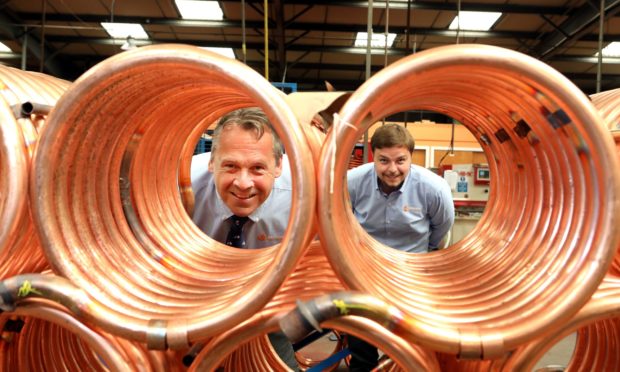A Fife-based hot water cylinder firm which made aeroplane wings during the Second World War continues to fly high as it marks 75 years in business.
McDonald Water Storage, based in Glenrothes, has outlived its competitors to be the only domestic hot water cylinder maker in Scotland and one of only a very few British independent manufacturers remaining in the plumbing and heating industry.
The firm has been trading since the 1930s, but was formally incorporated in 1945 and became internationally known for its plumbing systems.
When the Second World War broke out, McDonald Water Storage manufactured wings and components for a range of aircraft, including the famous Wellington bomber and fighter aircraft such as the Mustang and Curtis Tomahawk P-40.
As Britain began to rebuild at the end of the war, the firm recalibrated to manufacture hot water cylinders using copper.
As McDonald’s reputation grew, it exported complete plumbing systems all over the world, including Brazil, Australia and the Middle East.
However, as construction and plumbing techniques changed, the company expanded its market share in the copper cylinder market, ultimately developing an extensive range of products for the commercial and domestic sectors.
A management buyout in 1973 led to control of the firm moving to the current owners.
Managing director Jamie Stewart, whose father Jimmy was part of the buyout team, said the company is still very much a family affair.
Jamie and his brother Bill Stewart have led the company for the past 30 years and Jamie’s nephew, David, is the sales director and niece, Rachael, works in admin.
Mr Stewart said: “There was a move away from using copper to stainless steel in the sector’s manufacturing process due to a spike in copper costs, but for us copper remains a flexible and resilient material which is excellent at transferring heat effectively and also kills germs and viruses – including coronavirus.”
The company’s products are split with 30% of its products going to the commercial sector, including bespoke units used in hospitals, sports centres and hotels, while 70% are used in domestic properties including local authority housing throughout the UK.
Mr Stewart said the company’s policy of continuous investment has paid off as the firm eyes greater involvement in the renewable energy sector.
He said: “We will continue to be a dynamic and flexible business that is well placed to take advantage of the opportunities the renewable energy sector will offer, as water storage will have a bigger role to play.”
jimillar@thecourier.co.uk
